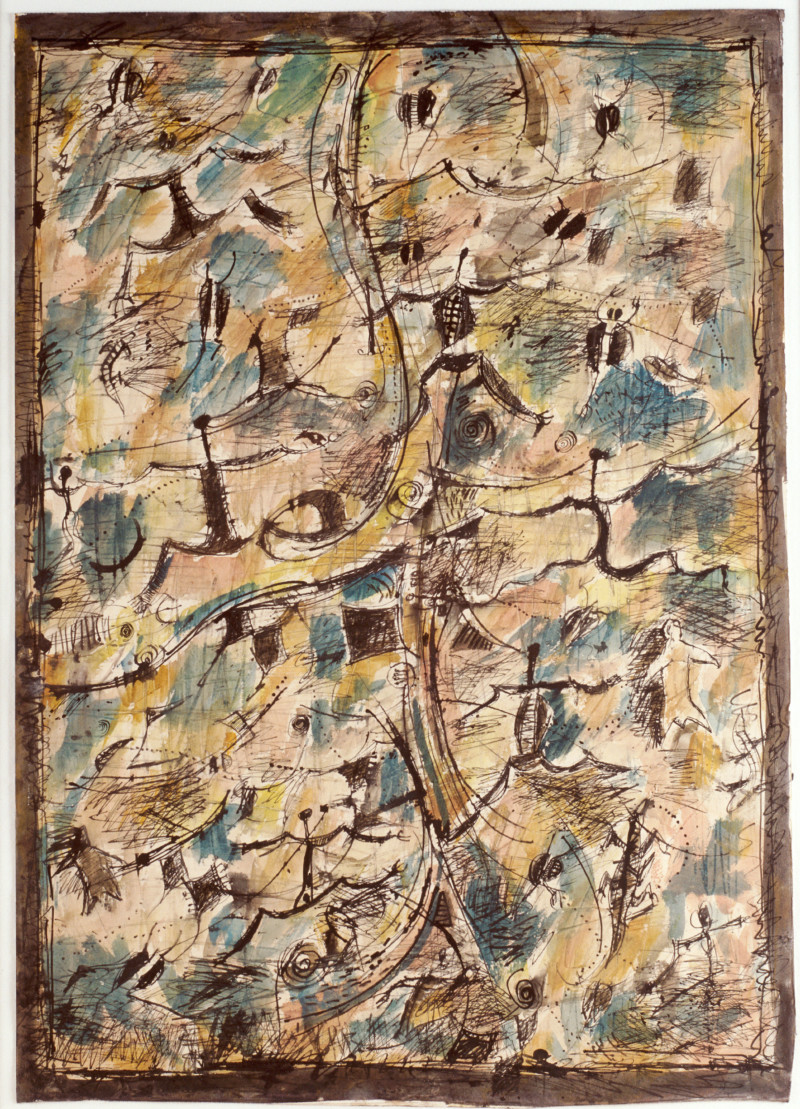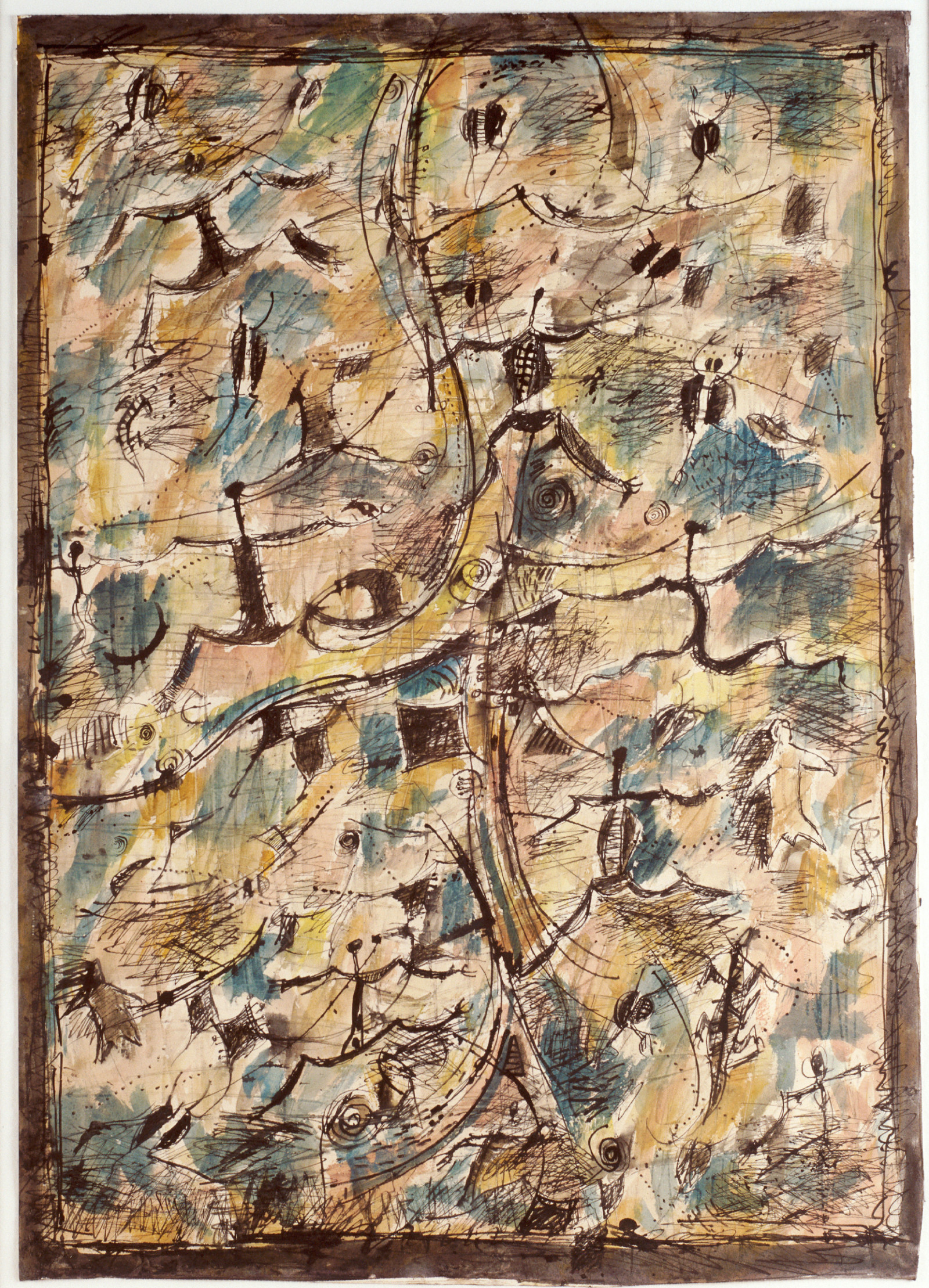MURU, Selwyn;
Māori Rock Drawing
1966
Ink and watercolour on paper
605 x 430mm (image); 820 x 625mm (frame)

Selwyn Muru is one of a number of Māori artists who came to prominence in the 1960s and who are known today as trailblazers in combining aspects of customary art with forms more immediately associated with the Western tradition. Here, Muru draws on motifs from the Māori rock art of Te Waipounamu. A work in a similar vein, but in oil paint rather than ink and watercolour, is Kōhatu (1965), at the Museum of New Zealand Te Papa Tongarewa (1965-0020-1). Jonathan Mane-Wheoki has observed that ‘it was the first painting by a modern Māori artist to be acquired for the national art collection’.[1]
The following two texts were written for Te Huringa/Turning Points and reflect the curatorial approach taken for that exhibition.
Peter Shaw
Selwyn Muru has always been a strong advocate of using traditional Māori art to explore creative avenues. The possibility of using rock drawings as the basis for painting was also explored by non-Māori artists, such as A. R. D. Fairburn, Theo Schoon, Gordon Walters, Dennis Knight Turner, and Russell Clark. These enigmatic, almost abstract but still figurative, shapes were appealing to a generation of people interested in making use of specifically New Zealand indigenous art forms. The studio potter Olive Jones was among the first to use such motifs on ceramics, a trend later picked up by Crown Lynn, which used them mainly in tourist settings. They were much in vogue, too, as table mats. However, the energy of Muru’s subtly coloured and highly calligraphic work is far removed from the vagaries of fashion.
Jo Diamond
Māori Rock Drawing is an early portent of an ara (path) of the innovative artistic style that Muru chose to assert in the 1960s and has maintained ever since. He introduces Māori references in the form of rock painting and also establishes his own artistic originality in a process that shies away from stereotyped Māori identification. The seemingly random yet well-controlled composition of this work reflects this aspiration, so that apparent ‘scribble’ is in actuality a well-deliberated part of this exploration of a unique style and form.
The work shows a youthful virtuosity in the making, one firmly based on rock painting of Māori ancestors. Later in his career, while still combining Māori cultural references with innovative artistic interpretations, Selwyn Muru’s work becomes more sophisticated. A well-known example is the waharoa (gates) in Aotea Square, Tāmaki Makaurau, that incorporates old traditions from Māori culture enhanced by new and less expected angles and embellishments.
[1] Jonathan Mane-Wheoki, ‘The Class of ’66’, Off the Wall 1 (March 2013): 3.
Exhibition History
Te Huringa/Turning Points: Pākehā Colonisation and Māori Empowerment, Sarjeant Gallery Te Whare o Rehua, Whanganui, 8 April to 16 July 2006 (toured)

